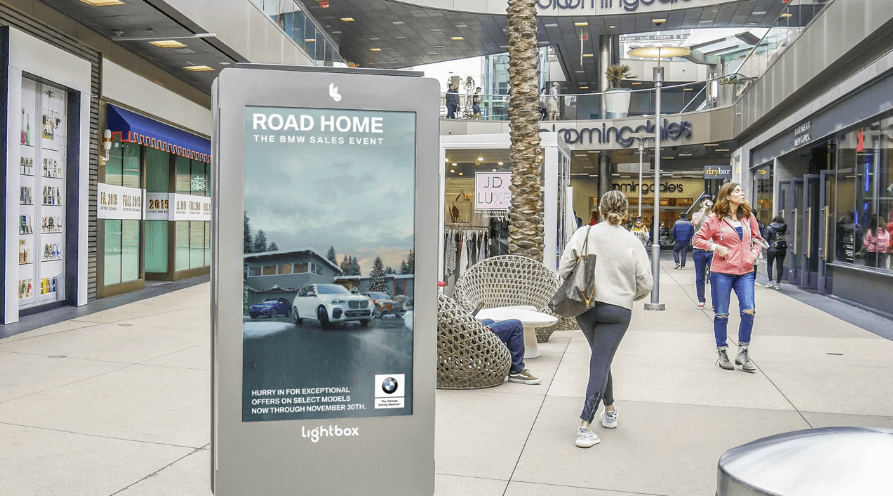Digital out-of-home media is everywhere - it can be found in virtually every location consumers visit outside the home, appearing in all shapes and sizes.
As a marketing channel, digital out-of-home encompasses place-based, point-of-purchase and large format signage. To provide you with a deeper understanding of what makes digital out-of-home such a remarkable medium, we’re taking a closer look at each of these types of DOOH.
According to François de Gaspé Beaubien, Chairman and Chief Coaching Officer of ZOOM Media, “DPB [digital place-based] networks reach consumers where they seek to be and where they spend their time. Audiences are engaged at a most receptive moment: on their path to purchase.”
What is place-based media?
Most DOOH is place-based
Typically, billboards are what first comes to mind when you mention out-of-home advertising. However, most digital out-of-home is actually place-based media. Place-based media is defined by contextually relevant environments and includes office buildings, malls, gas stations, gyms, taxis and rideshares, restaurants, bars, universities and more.
Several networks consider themselves place-based
Networks that offer place-based media include Captivate, ZOOM Media, Vengo, TouchTunes, Rouge Media, GSTV, Topgolf, Cinema Scene, Lightbox OOH Video Network, Curb and many more.
Benefits of place-based DOOH
When executing a campaign that requires targeted exposure and measurable dwell time, your brand will benefit from the attention place-based screens command. Since many consumers spend most of their day outside the home — in the car, at work, shopping, dining and on-the-go – the contextually relevant nature of place-based screens allows you to reach consumers as they move throughout the day and in places where your creative messaging can be matched to the location.
For example, if a protein bar brand wanted to reach consumers who demonstrate healthy lifestyle behaviors, they could target an audience of gym-goers — both at gyms and in other locations where gym-goers visit, like certain neighborhoods, grocery stores or coffee shops.
Why is place-based media important?
Ultimately, the distinct venues of place-based media provide brands with a unique opportunity to engage with consumers as they go about their everyday activities. By integrating advertisements into a natural setting, such as a shopping center or transit hub, brands gain prime access to a range of audiences, amplifying the impact of a campaign without bombarding consumers with intrusive ads.
Interested in learning more? Contact our team today for more information.

